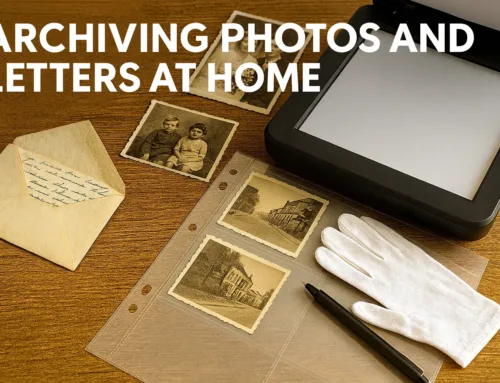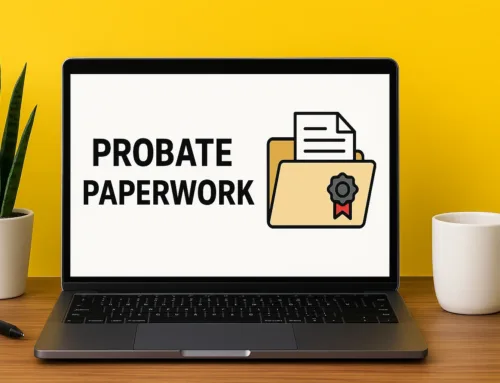Losing a loved one is hard. Clearing their home can feel even harder. A house clearance after bereavement involves sorting through personal items, deciding what to keep, donate, or remove, and managing all the logistics with care.

This guide gives you simple, clear advice to help you through the process. Whether you’re working alone or using professional services, you’ll learn how to stay organised and reduce emotional stress.
💡 Key Takeaways
- A house clearance can be partial or complete, depending on your needs
- Professionals offer sensitive support during emotional times
- Planning and creating an inventory keeps the process focused
- Donation and recycling reduce waste and help others
- Probate or tenancy rules may apply—check early
What Is a House Clearance After Bereavement?
When someone passes away, their home often needs to be emptied. This process is called a house clearance after bereavement. It includes:
- Organising and removing furniture, clothing, documents, and personal effects
- Deciding which items are valuable, sentimental, or no longer needed
- Safely disposing of unwanted materials
- Handling emotional, legal, and practical tasks
Some people handle everything themselves. Others work with a clearance company. A hybrid approach is also common—where family sorts items, and professionals handle removal.
When Do You Need a House Clearance?
You may need to clear a home in the following situations:
- A loved one has passed away, and their property must be sold or returned to a landlord
- Probate requires a full inventory of belongings
- The person was moving into care, and the home is no longer in use
- You’re managing an urgent sale or house repossession
Planning early avoids rushed decisions during an already difficult time.
Should You Do It Yourself or Hire Professionals?

✅ DIY House Clearance
Pros:
- Saves money
- Gives you control over sentimental items
- Allows time to process grief at your own pace
Cons:
- Very time-consuming
- Physically demanding
- Can be emotionally overwhelming
✅ Professional House Clearance Services
These companies offer:
- Item valuation
- Packing and removal
- Eco-friendly recycling and charity donation
- Licensed waste disposal
Tip: Always choose a licensed company. Ask for proof of insurance, written quotes, and recycling rates.
How to Prepare for a House Clearance After Bereavement
A little planning goes a long way. Here’s how to begin:
Step 1: Make an Inventory
Use a simple room-by-room checklist. Add notes for each item—keep, donate, or dispose.
| Room | Keep | Donate | Dispose |
|---|---|---|---|
| Bedroom | Photos | Clothes | Broken lamp |
| Kitchen | Cutlery | Toaster | Expired food |
Photograph valuable or sentimental items before you sort. This helps for insurance and family discussions.
Step 2: Understand Local Council Rules
Local councils have strict rules for waste. For example, paint, batteries, and large electronics require special handling.
| Waste Type | Disposal Method | Permit Needed |
|---|---|---|
| Furniture | Council collection | No |
| Electronics | Certified recycling | Yes |
| Garden waste | Green bin or facility | No |
| Paint or asbestos | Hazardous waste site | Yes |
Sorting Items During a House Clearance
Sorting is where most emotional difficulty happens. Here’s how to manage it gently:
Use Colour Labels to Categorise:
- 🔴 Keep – daily or sentimental value
- 🟠 Donate/Sell – good condition, no longer needed
- 🟢 Dispose – broken, stained, expired
Work one room at a time. Begin with the easiest space (like a hallway or kitchen) to build momentum.
Safety & Environmental Care

A modern house clearance after bereavement should be safe for everyone—and for the planet.
Watch Out for Hazardous Materials
Old properties may contain:
| Material | Risk | Safe Disposal |
|---|---|---|
| Asbestos | Lung damage | Licensed contractor |
| Lead paint | Toxic exposure | Specialist removal |
| Batteries | Soil pollution | Recycling drop-off point |
| Old medicine | Water pollution | Return to pharmacy |
Reuse and Recycle
Up to 75% of a household’s contents can be reused. Aim to:
- Donate usable furniture to local charities
- Take electronics to WEEE-certified plants
- Recycle textiles, wood, and metal properly
👉 Helpful resource: Find your local recycling centre
Managing Grief During the Clearance
This process can be deeply emotional. Here are ways to stay grounded:
- Create a memory box with letters, photos, or small keepsakes
- Take photos of sentimental items before letting them go
- Plant a tree or light a candle to honour your loved one
- Ask a close friend to support you during emotional decisions
Coordinating with Family
If others are involved, set roles:
- One person documents items
- Another handles utility cancellations
- Others help with sorting or cleaning
Use shared calendars or apps to track progress and avoid duplication. When family tension rises, a professional service can offer neutral help.
Final Thoughts: A House Clearance with Respect
Handling a house clearance after bereavement is never easy. But with gentle planning, support, and patience, the process becomes manageable—and even healing.
You don’t have to do it all at once. Take it step by step. Seek help when needed. Focus on honouring your loved one’s memory while creating space for new beginnings.





